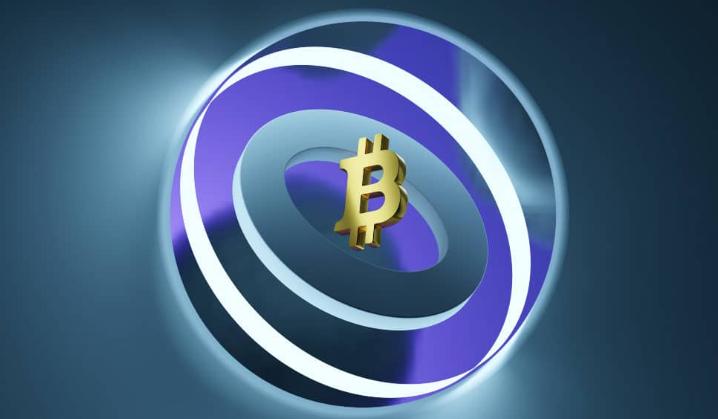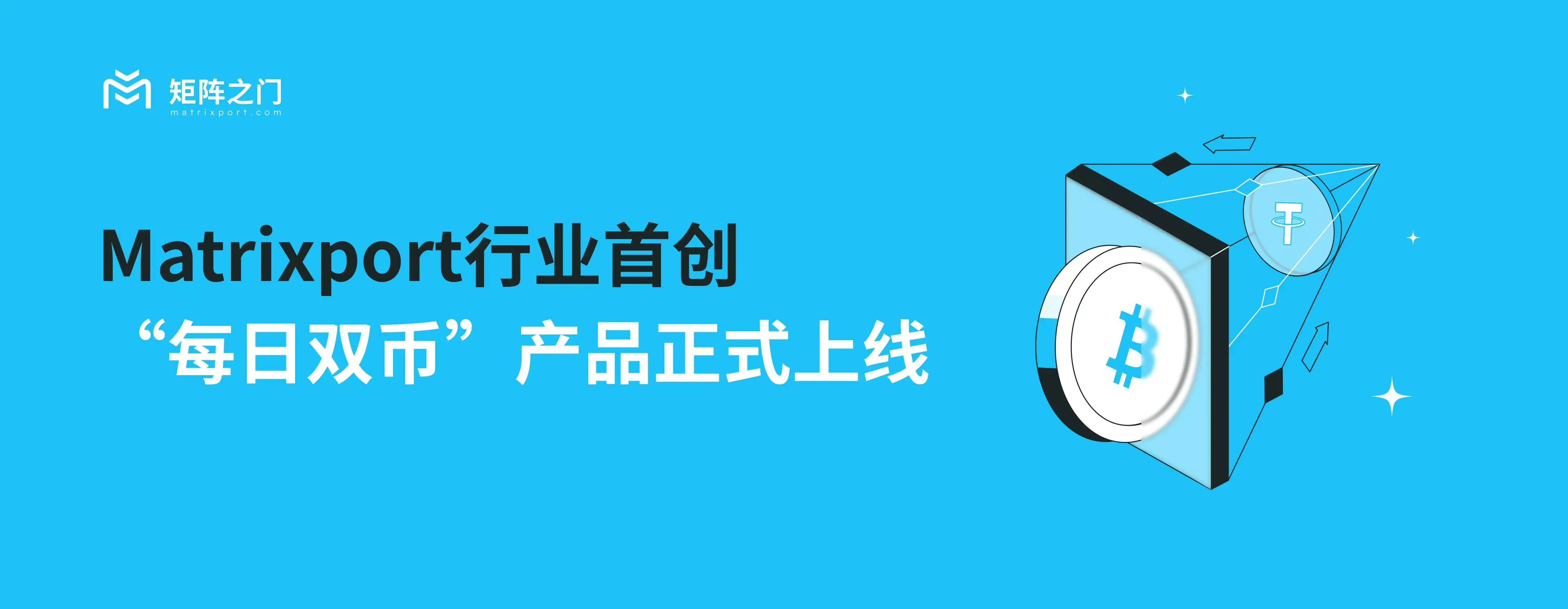More Useful than Taproot? A Deep Dive into the Working Mechanism and Technical Features of Drivechain
Author: LayerTwo Labs
Recently, due to the surge in Bitcoin ecosystem NFTs, BRC-20, and others, the Bitcoin network has become increasingly congested. BRC-20 tokens and Ordinals NFTs have turned the leading blockchain into a heavier version of Ethereum overnight.
The core developers and miners who signed the Taproot upgrade in November 2021 could never have imagined that Bitcoin would now face many of the same issues that have plagued Ethereum for years, including deceptive meme coins and junk coins, monkey image NFTs occupying block space, and skyrocketing transaction fees.
So what exactly is BRC-20? What is the Ordinals protocol? How are they related to the Lightning Network?
1. Ordinals Protocol ------ The Official Arrival of the Bitcoin "Sats" Era
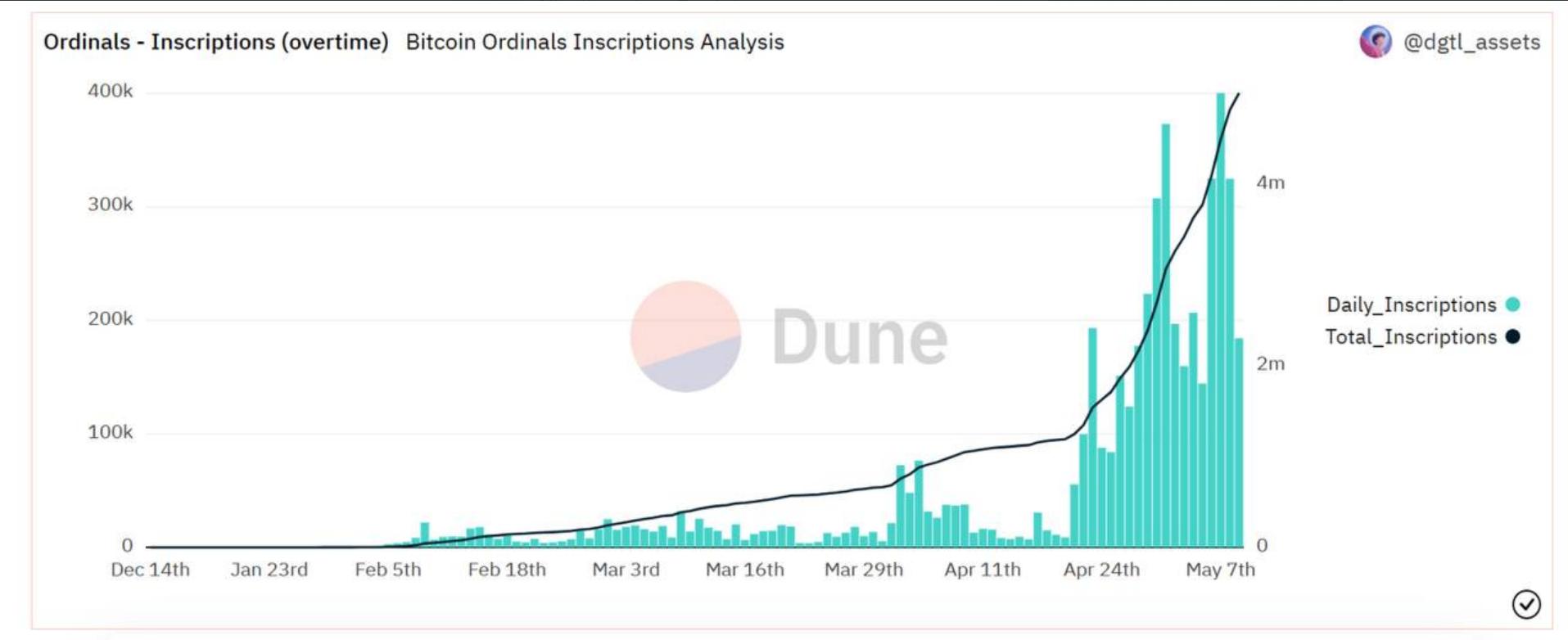
The ordinary minting fee in May reached a historic high. It is an ideal choice for miners, but the experience of paying expensive fees is not very pleasant for users.
Since Ethereum was designed from the beginning to support smart contracts and decentralized applications, it has a natural advantage in the NFT field. Based on Ethereum's ERC-721 standard, developers can easily create, issue, and trade NFTs. At this point, you might wonder why Bitcoin, with the strongest consensus, cannot issue NFTs? The original intention of Bitcoin was to become a peer-to-peer digital currency, so its network focuses more on security, stability, and simplicity, which leads to relatively limited functionality in smart contract and DApp development.
This does not mean that the Bitcoin network cannot support NFTs; it can even issue "tokens." This brings us to the focus of our discussion—Ordinals, a protocol created by former Bitcoin developer Casey Rodarmor.
1. The Start of Ordinals: Bitcoin NFTs
In January 2023, Bitcoin core contributor Casey Rodarmor released the Ordinals protocol. The emergence of the Ordinals protocol reignited discussions about Bitcoin NFTs. How does the Ordinals protocol make NFTs possible on Bitcoin?
The total supply of Bitcoin is 21 million coins, and its smallest unit is Sats (Satoshis), where 1 BTC = 100 million Sats.
The Ordinals protocol proposes an innovative design based on "Sats," allowing various information—such as images, text, videos, etc.—to be embedded in "Sats" (called "inscriptions"). The uploaded inscriptions are linked to specific "Sats" (called "Ordinals"), and this process is referred to as inscribing, similar to minting NFTs on Ethereum. The result is Sats carrying inscriptions, which are known as Bitcoin NFTs.
When each Sats has a unique mark and number, the corresponding content also has uniqueness, transforming Sats from merely a unit of account to a unit of NFTs.
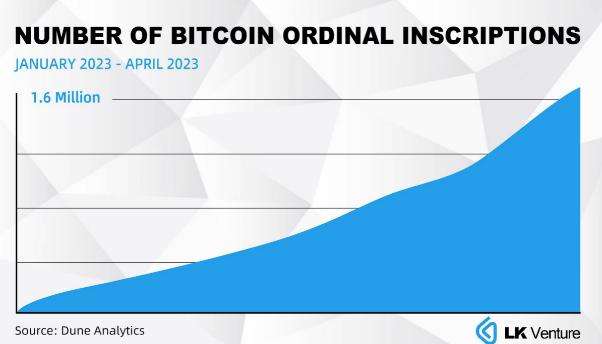
Data Source: Dune Analytics
2. Exploration of Ordinals: BRC-20
Two months after the release of the Ordinals protocol, Twitter user @Domodata proposed a token standard on Bitcoin—BRC-20 standard.
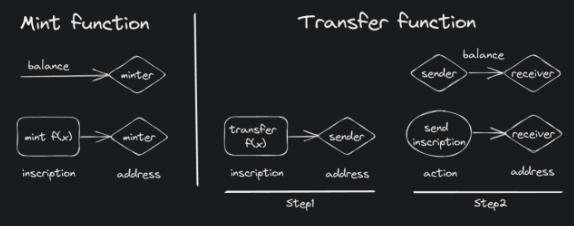
BRC-20 utilizes JSON data's Ordinal inscriptions to deploy token contracts, mint tokens, and transfer tokens. You can think of the BRC-20 standard as an application-type NFT of Ordinals, equivalent to a check; BRC-20 does not have smart contracts.
Within 24 hours of the release of BRC-20, over 30,000 Ordinal inscriptions were minted. @Domodata also deployed the first BRC-20 token—$Ordi, with a total supply of 21 million, and anyone could mint it for free. In less than two days, all $Ordi tokens were minted.
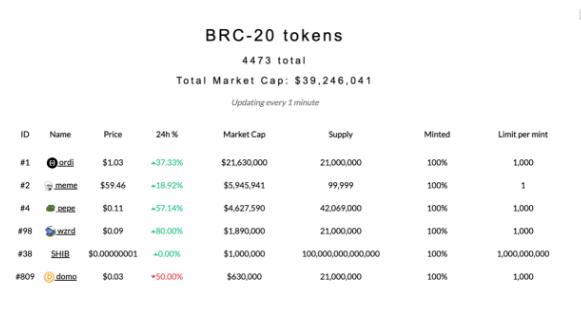
Some BRC-20 tokens, Source: https://brc-20.io/
Although @Domodata repeatedly stated that BRC-20 and $Ordi are just experiments with no value, some people still traded $Ordi and minted more BRC-20 tokens.
Regardless of whether the Ordinals protocol and BRC-20 succeed, their emergence has shown us new possibilities for Bitcoin, making the Bitcoin ecosystem more diverse and vibrant. Most importantly, they have transformed the smallest unit of Bitcoin, Sats, from a concept into a practical unit. However, both the Ordinals protocol and BRC-20 cannot escape the fate of the Bitcoin network: issues such as slow transaction speeds, high fees, and difficulties in scaling still constrain Bitcoin's performance and broad application scenarios. The Lightning Network, however, strives to realize Bitcoin's original intention—becoming a peer-to-peer electronic cash system—solving this dilemma: in addition to large transactions, small transactions of "Sats" can also flow very conveniently through the Lightning Network.
So what is the Lightning Network, once hailed as one of Bitcoin's "killer apps" to solve scalability issues? What disadvantages have been exposed as it has developed? What insights can Bitcoin's future upgrades gain from the Lightning Network? Why does Dr. Adam Back consider Drivechain to be a better technology than Taproot?
2. What is the Lightning Network?
The Lightning Network is an off-chain service solution that does not send any currency but makes changes to the ledger at the second layer and subsequently settles at the first layer, thereby avoiding thousands of actual on-chain fund transactions.

According to data from the Lightning Network browser, there are currently 3,639 nodes built in the Lightning Network, forming 12,289 channels, with a network capacity of 114.83 BTC.
The purpose of the Lightning Network is to enable secure off-chain transactions. It essentially uses hash time-locked smart contracts to facilitate zero-confirmation transactions securely. By setting up clever "smart contracts" and improving off-chain channels, users can conduct zero-confirmation transactions on the Lightning Network.
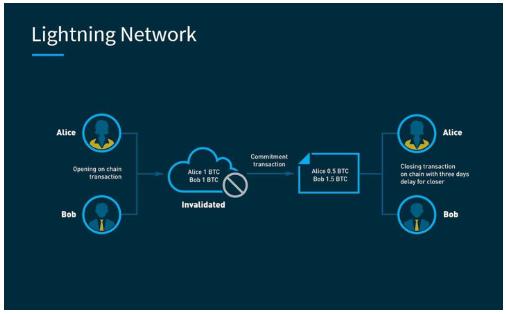
The Lightning Network is Bitcoin's Layer 2 scaling solution, aimed at enhancing Bitcoin's efficiency and reducing gas fees. Since its establishment in 2015, it has made significant progress and gained widespread adoption in recent years.
3. What is the Bitcoin Taproot Upgrade?
Taproot is a soft fork that improves Bitcoin's scripting to enhance privacy, efficiency, and the network's ability to process smart contracts. It is considered the most important Bitcoin upgrade since the SegWit upgrade in 2017.
The Taproot upgrade includes three different Bitcoin Improvement Proposals (BIPs), including Taproot, Tapscript, and its core—a new digital signature scheme called Schnorr signatures. Taproot aims to bring multiple benefits to Bitcoin users, such as enhanced transaction privacy and reduced transaction fees. It will also enable Bitcoin to execute more complex transactions and potentially expand its use cases to compete with Ethereum, particularly in smart contract functionality and support for decentralized finance (DeFi) and non-fungible tokens (NFTs) on the network.
The Taproot proposal was first published by Bitcoin core developer Greg Maxwell in January 2018. In October 2020, Taproot was merged into the Bitcoin core repository after a pull request created by Pieter Wuille. For the upgrade to be fully deployed, node operators must adopt the new consensus rules of Taproot. It ultimately received support from 90% of miners and was officially activated on November 14, 2021, at block 709,632.
4. How Does Taproot Work?
Three BIPs work together to implement the Taproot upgrade. Each BIP affects and complements the others in different ways.
1. Schnorr Signatures (BIP340)
Schnorr signatures facilitate a faster and more secure way to verify transactions on the Bitcoin network. It consists of a cryptographic signature scheme developed by German mathematician and cryptographer Claus Schnorr.
2. Taproot (BIP341)
Taproot is the namesake of the Taproot upgrade. It builds upon the 2017 SegWit upgrade and uses a Merkelized Alternative Script Tree (MAST) to expand the amount of transaction data on the Bitcoin blockchain.
3. Tapscript (BIP342)
Tapscript is an upgrade to the coding language of Bitcoin scripts, paving the way for the other two BIPs. It is a collection of opcodes used to specify how transactions are executed.
In 2023, the Lightning Network continues to evolve in adoption and development. Many businesses and individual users are now using the Lightning Network to process Bitcoin transfers, and the number of Lightning Network nodes and channels has been steadily increasing.
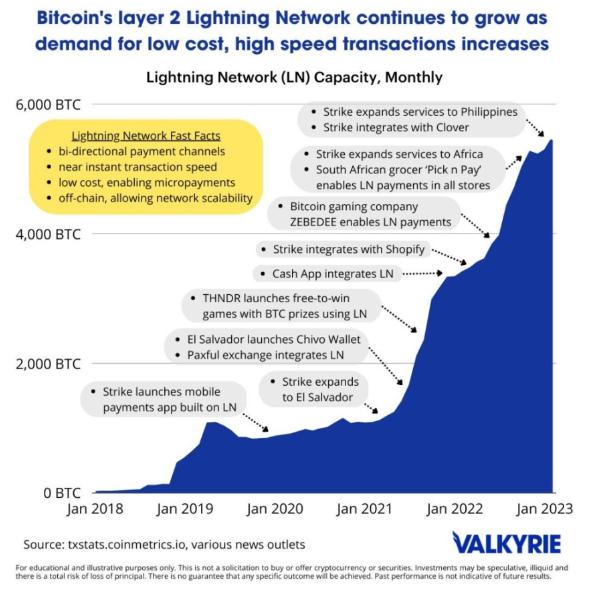
In recent years, the Lightning Network has experienced significant growth and widespread adoption, and it has been able to greatly expand its capacity.
Currently, over 5,400 Bitcoins are locked in the Lightning Network. The Bitcoin capacity in the Lightning Network refers to the total amount of Bitcoin that can be transferred through the network at any given time. However, the total capacity is not fixed and continues to expand as more nodes join the network.
The activation of Taproot enhances the functionality of the Bitcoin network to facilitate fast and reliable transactions. Before Taproot, the Bitcoin protocol was still in the Layer 1 development stage, while other protocols like Ethereum had already taken the lead in Layer 2 and DApps. After the upgrade, Bitcoin opened the door to deploying smart contracts and has the potential to expand its use cases to cover future trends in the NFT and DeFi markets.
As the Bitcoin network becomes more efficient with lower fees, it can incentivize more transactions and broader adoption. Additionally, users can maintain their transaction privacy, making BTC more competitive in the market compared to other privacy coins.
Although the Lightning Network can address some issues caused by the main chain's performance limitations, it still has many flaws that have been criticized, mainly reflected in the following points:
- Technological complexity and slow development process: The Lightning Network white paper was born in 2015 and is still in the testnet phase, unable to be used on a large scale, and the congestion issue of Bitcoin's main chain remains unresolved.
- Difficulty in establishing network effects: For a network, the more users it has, the greater its value. However, the complexity of the Lightning Network raises the threshold for building Lightning Network nodes, making it difficult for users to form scale effects.
- Centralization tendency of nodes: According to the design of the Lightning Network, influenced by costs and various factors, the nodes of the Lightning Network may evolve into a network connected by a few large nodes. Currently, the top-ranked node, dead.cash, accounts for 15.5% of the entire network's capacity. Although these large nodes cannot control the network, they can technically be seen as central transfer institutions, making it easy for regulators to intervene and review.
- Security issues: After the Lightning Network testnet went live, there were several incidents of lost coins. Additionally, it contradicts Satoshi Nakamoto's original intention of a peer-to-peer electronic cash system; the structure of transactions on the main chain is Bitcoin address to Bitcoin address, while transactions through the Lightning Network follow a process of BTC-LNBTC-LNBTC-BTC.
The Lightning Network makes it possible to instantly transfer small amounts of Bitcoin, and the fees can be negligible. However, since the Lightning Network is not independent of the Bitcoin network but is a second layer developed based on the Bitcoin network, it is urgent to find new feasible scaling solutions that can fundamentally support the growing application demand.
5. Why is Drivechain Considered More Useful than Taproot?
It is important to note that the Bitcoin Lightning Network is still a relatively new technology that is continuously evolving and improving. As the technology matures and adoption increases, some of its drawbacks may be resolved or mitigated. Dr. Adam Back, founder of Blockstream, believes that Drivechain can be considered better than Taproot (a BTC Layer 2 technology for Ordinal NFTs).
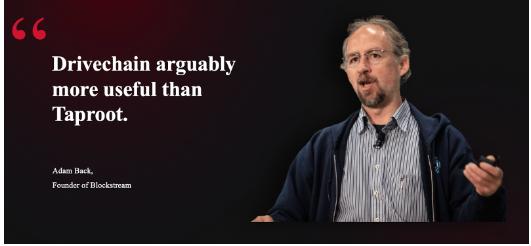
1. What is BIP300?
"Hashrate Escrows" compresses 3-6 months of transaction data into 32 bytes through "Container UTXOs." It reduces the size of BTC blocks by encoding certain fields in BTC transactions.
BIP300 is a Bitcoin Improvement Proposal known as Drivechain. Drivechain is essentially a sidechain or an independent blockchain built on the Bitcoin blockchain that uses BTC as its primary currency. BIP300 was proposed by Paul Sztorc and his company Layer 2 Labs, which has raised $3 million to improve Bitcoin's privacy, scalability, and user experience.
Drivechain defines a specific way to create Bitcoin sidechains. A sidechain is a parallel blockchain to Bitcoin that allows Bitcoin to "flow" between the two networks in a bidirectional manner.
Since BTC coins cannot actually leave the Bitcoin network, sidechains accomplish this by locking BTC on the Bitcoin blockchain and representing them differently on the sidechain. The goal is to maintain a 1:1 peg between the representation of BTC on the sidechain and the actual BTC locked on the Bitcoin network.
2. What is BIP301?
"Blind Merged Mining" allows miners to mine sidechains/altcoins without running their node software, meaning BTC miners can simultaneously mine sidechain blocks, and the network's security is maintained by existing BTC miners through merged mining.
The idea behind BIP301 is to enhance mining incentives. Layer 1 miners collect sidechain transactions without actually seeing them. This is called blind merged mining, which allows BTC miners to mine sidechains without running their node software (hence "blind").
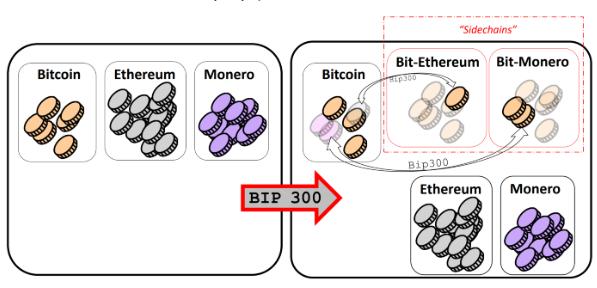
In contrast, a separate sidechain user runs their node and builds blocks, paying transaction fees themselves. They then "purchase" the right to find this block from traditional Layer 1 miners with an equivalent amount of money.
Thus, in practice, if miners do what they typically do today, including paying for all transactions that pay them the most fees, they will automatically mine all sidechain blocks and collect revenue from all sidechain transactions.
3. What is Drivechain?

Today: All market features are separated by major public chains.
Tomorrow: BTC + Drivechain can become the foundation for everything, with sidechains having unlimited TPS, complete scalability, unlimited functionality, and innovation, with UI and UX only limited by the developers' creative imagination.
Using our technology to run sidechains, the block size can be very large, and TPS is almost unlimited. Therefore, use cases like NFTs and tokens will be more economical and efficient, providing a better experience for end users. This also keeps the layer 1 block size very small and decentralized, providing miners with extraordinary benefits from collecting transaction fees from all sidechains.
Bitcoin's Drivechain is a sidechain technology designed to expand Bitcoin's functionality and applications by running sidechains on the Bitcoin network. The basic idea of Drivechain is to use Bitcoin as the underlying blockchain and create sidechains by locking Bitcoin, thus achieving bidirectional interoperability between Bitcoin and the sidechains.
The main advantage of Drivechain is that it can realize the unfulfilled functions and applications of Bitcoin through sidechains without affecting Bitcoin's security and decentralization.
The design of Drivechain also provides a new scaling solution for Bitcoin, as it can achieve higher transaction throughput and shorter confirmation times on sidechains without compromising the security and stability of the Bitcoin network. Additionally, Drivechain can ensure the security and reliability of sidechains through Bitcoin's consensus mechanism, thereby enhancing the trustworthiness of sidechains.
The Drivechain and Sidechain upgrades of the Bitcoin protocol were created by Paul Sztorc, founder of LayerTwo Labs, who has been a top Bitcoin OG researcher and developer since 2011 and is also an economist at Yale University.
Drivechain enables permissionless sidechains on Bitcoin, allowing anyone to develop any tokens, smart contracts, DApps, and other new concepts on their sidechains. Developers of each sidechain can determine the block size, the number of minutes per block, and any parameters. Everything can be adjusted according to the developers' preferences. We can understand Drivechain as providing a clear direction and standard for the development of Bitcoin's Layer 2 technology.
4. What is Mainchain?
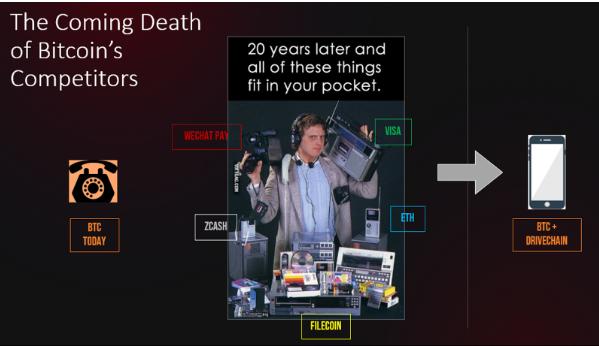
Today, Bitcoin has very few features and functions. But with the Drivechain upgrade, it can do everything.
LayerTwo Labs will hard fork BTC in 2023 and create a new PoW blockchain. This hard forked PoW blockchain will be called Mainchain. Mainchain (MC) will come pre-installed with all Drivechain upgrades (BIP300 and BIP301) from day one.
5. How Does Mainchain Work?
LayerTwo Labs will launch seven self-developed sidechains during the Mainchain hard fork (consider them as "decentralized applications" or DApps). Project teams, developers, and anyone can create sidechains (Layer 2) on Mainchain (Layer 1) without permission to experiment with any ideas and concepts.
During this period, all BTC addresses will receive Mainchain tokens at a 1:1 ratio. Mainchain will follow all the same rules as BTC: a total supply of 21 million tokens, a block time of 10 minutes, block rewards halved every four years, and using the same PoW consensus model as BTC.
This means that all existing mining equipment capable of mining BTC (SHA256 algorithm) can mine Mainchain. Initially, due to the reduced mining difficulty of Mainchain, even outdated equipment (GPU, old ASIC miners) can mine MC and yield good returns (receiving more MC block rewards).
In other words, after the Drivechain upgrade, each sidechain has no logical limitations, and developers have unlimited space to design their desired sidechains. Each sidechain requires its own nodes and hardware; miners only need to do one thing: confirm the sidechain's exchange history once every three months. Each confirmation only requires looking at a 32-byte hash (64 characters), placing minimal hardware pressure and cost on miners to audit the operation of the sidechain. After the audit, the fees will go to Bitcoin miners because each hash is small and can easily fit into Bitcoin blocks. After the Drivechain upgrade, NFTs, smart contracts, and tokens can run on Bitcoin sidechains because the existing Bitcoin block capacity is too small to accommodate these projects and applications.
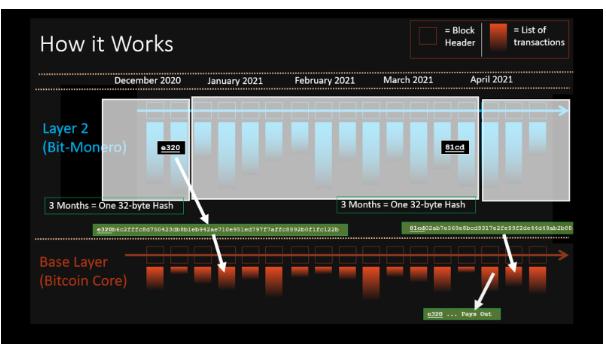
Mainchain will be the only PoW chain that can support any concept and idea through sidechains. We intend to develop Mainchain so that it can host hundreds of thousands of sidechains. Among these sidechains, some may become unicorns or killer applications—decentralized applications that people are eager to use repeatedly.
Over time, Mainchain will become a thriving ecosystem, favored by sidechain users and supported by numerous miners (even those who may have converted from BTC to MC). Under the pressure of the success of Mainchain (MC) and its sidechains ecosystem, BTC miners may ultimately vote to support the activation of the BIP300 and BIP301 protocols.
6. New Features of Mainchain
In summary, Mainchain will have the following innovative features in its Layer 2 network:
- Drivechain (BIP300) is an upgraded version of the BTC protocol created and developed by LayerTwo Labs founder and CEO Paul Sztorc since 2013. Drivechain allows developers to create any blockchain application they want through sidechains connected to the BTC network.
- Treat sidechains as Layer 2 and BTC as Layer 1.
- On sidechains, developers can freely and permissionlessly issue tokens, smart contracts, block sizes, consensus models (PoW, PoS), use cases, DApps, UX and UI, functionalities, and rules without any restrictions.
- BTC miners will regularly collect fees from each sidechain without needing additional hardware or costs.
- Failures on sidechains will not harm Layer 1 BTC in any way; it is always beneficial for BTC miners.
- Endless innovative applications through sidechains = BTC miners collect more transaction fees = more mining incentives = increased hash rate = thus raising BTC prices.
Drivechain opens up more application scenarios and innovative opportunities for Bitcoin, while Mainchain integrates numerous application scenarios and innovative opportunities, promoting the prosperity of Bitcoin's Layer 2 network. Through Mainchain, more complex payment channels, smart contracts, and decentralized applications can be built, expanding Bitcoin's functionality and use. This helps drive the development of the Bitcoin ecosystem, attracting more projects, developers, and users to participate.
Overall, Mainchain provides Bitcoin with higher scalability, programmability, lower transaction costs, richer imagination, and promotes the practical application and diversified development of the Bitcoin ecosystem. This is a significant milestone in advancing the development of the cryptocurrency industry.
Reference Links:



